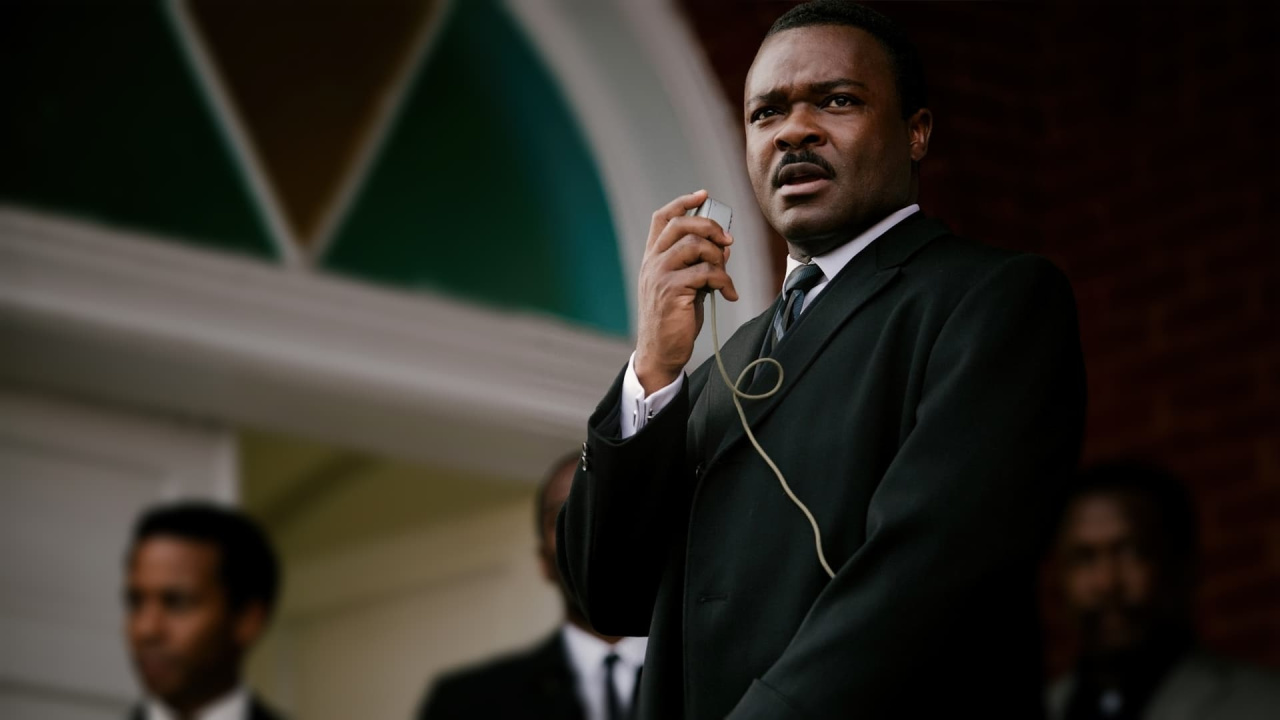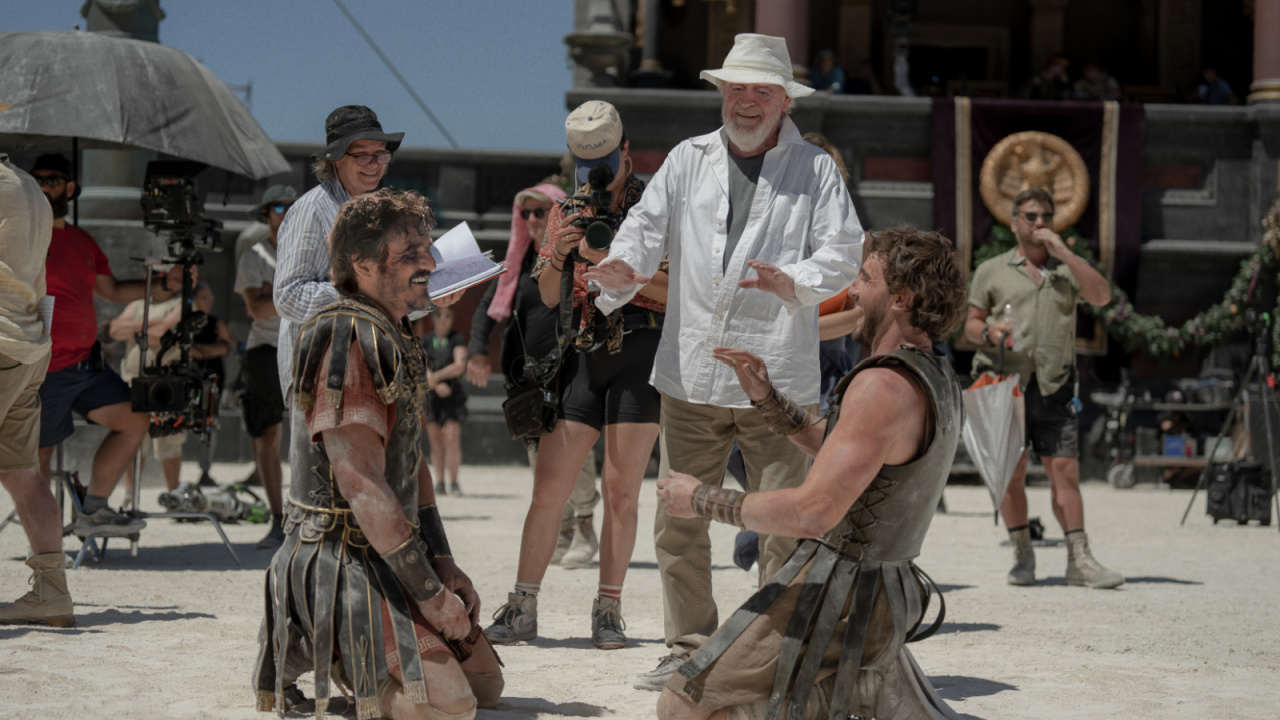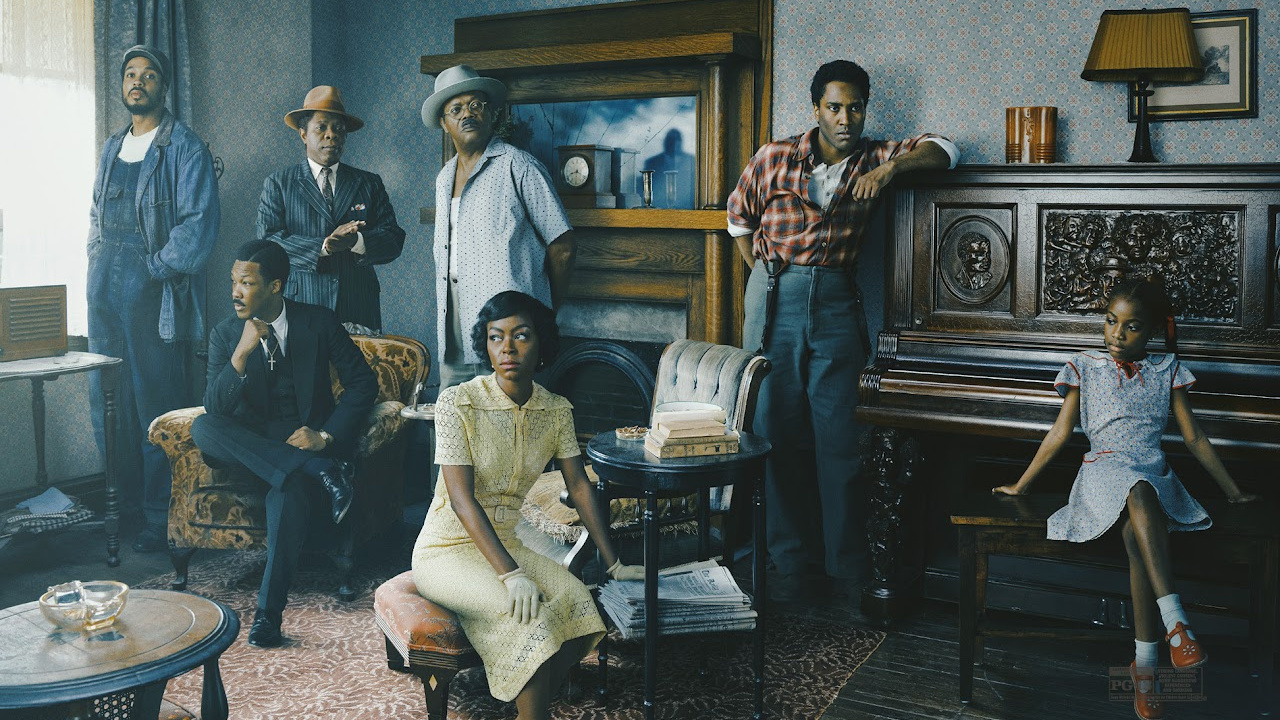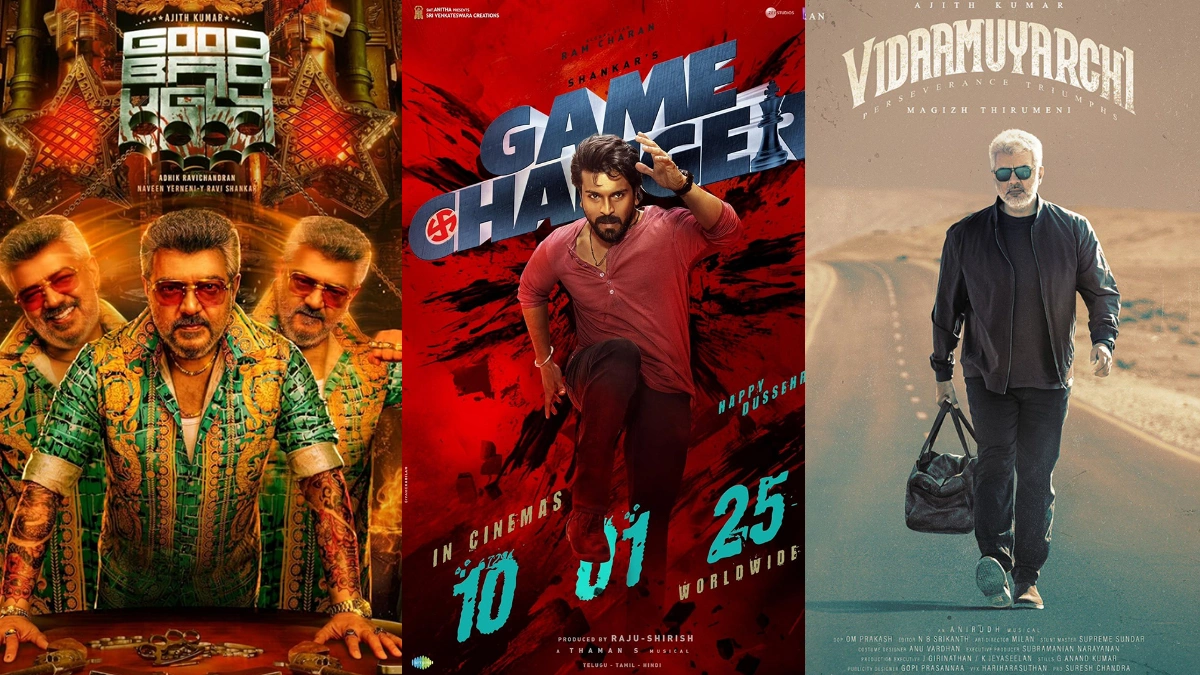College Football 26 Review
A sophomore season that's more focused on steady improvement rather than breakout success.


There’s an old idea called the sophomore slump that says second efforts generally aren’t as good as the first. Sophomore students don't care as much as freshmen; bands have less time to make a second album than the “out of nowhere” breakout hit they worked on for years; athletes who have exceptional rookie years regress to the mean; and so on. There’s no denying the power of new car smell, and part of the reason College Football 25 popped off as hard as it did (and trust me if you’re unsure: it popped off) was because it’d been more than a decade since NCAA 14. People really, really wanted a new game based on college football. It didn’t hurt that it was also a good one, but the annual “it’s the same game as last year” fatigue of the sports genre hadn’t set in yet. College Football 26 doesn’t benefit from new car smell anymore, but it’s not a game suffering from the sophomore slump, either. This season is better than last year’s; it’s just more focused on steady improvement than breakout success.
Here’s the secret, y’all: once a sports series “solves” the gameplay, it’s never really going to be bad. And College Football 26 (and frankly, Madden, too) has largely solved the “make the football video game play good” part of the football video game. At worst, it’s going to feel samey from year to year, like you’re stuck in football-themed purgatory at a party that’s never quite bad enough to leave. That’s not College Football 26; this is good-ass barbeque, and I’m happy to be here. But like a good-but-not-great QB working on his footwork and release, the devil is in the details. Improvements here are more evolution, less revolution, but this is an annual sports game. You kinda knew that going in.
Part of that is because College Football 26 is built on a really firm foundation. College Football 25 was a good game, and it still has that infectious spirit and sense of tradition that made it a nice change of pace from the more straight-laced Madden. This year’s iteration expands on that in good ways. One of the things I appreciate most is the Trophy Room, which tracks the real world trophies you’ll accumulate across your entire career, no matter what mode you’re in. It’s cool to see stuff like the Heisman Trophy, the Unitas Golden Arm Award, and the Orange Bowl Trophy collected in one place, and be able to learn about them, too. There’s a lot of history to college football, and I appreciate that EA has tried to capture that.
Aside from the addition of the Trophy Room, though, there are no new modes in College Football 26. The options are the exact same as last year, so I am going to copy and paste last year’s paragraph breaking down the modes. Fair’s fair, right?
“You’ve got Play Now, Road to the College Football playoffs, which is a quickfire online ranked mode where you’ll pick a team and try to guide them to a National Championship; Road to Glory, which lets you create your own player and pilot them through their college career; the flagship Dynasty mode, where you’ll helm one of College Football 25 26’s 136(!) [Delaware and Mississippi State are new additions] teams as either a head coach or an offensive or defensive coordinator; Practice and Minigames; and finally, College Ultimate Team (CUT), the college version of Madden Ultimate Team. Just like its big brother, CUT is a slot machine masquerading as a trading card game that will almost assuredly make EA hundreds of millions of dollars and eventually earn the ire of the community as it gets more updates per year than every other mode combined.”
I was kinda hoping that College Football 26 would move its tutorials out of Ultimate Team, but no such luck. This is still a bad system and it’s still a deeply cynical move on EA’s part. Again, I quote from last year’s review:
“The only reason to do it this way is to corral new players into CUT so they can fall down the money hole – of course, it’s somewhat self-defeating that they have to figure out that the tutorials are in CUT in the first place, which is something College Football 25 26 doesn’t actually tell you. As someone who doesn’t play Ultimate Team beyond my obligations as a critic for obvious reasons [and presuming I hadn’t played College Football 25], I would’ve just assumed that there were no tutorials at all and EA simply wanted college football-curious folk who didn’t already play their football to wander around aimlessly until they figured it out for themselves. In actuality, EA wants all of us to get hooked on CUT and spend lots and lots of money. I’m not sure which is worse.”
That’s all still true, but the College Football team has at least made some really nice quality of life updates to Ultimate Team. I’m going to single out two I appreciated in particular: One is the Pack Helper, which will immediately tell you if a player is better than someone in your current lineup and let you equip them on the spot without entering another menu. The other major one is that you can now see your challenges from the play call screen and bring them up at any time pre-snap, no more pausing required. These, as well as some other changes, are very nice tweaks. That said, I functionally believe, deep in my soul, that these modes are predatory, more than a little evil, and designed to trigger the dopamine-producing parts of our brain that gambling stimulates in the hopes that you will continue to spend money for a chance at a good outcome, which is what gambling is, and I cannot endorse anything about them. Yes, you can build a team without spending money, but it is designed to take much longer than just opening your wallet, and given that doing so can literally make your team better, it is pay to win. These are unremarkable and verifiable truths. Do with them what you will. I say we move on to greener pastures.
The mode that has seen the most meaningful changes in my eyes is Road to Glory, where you’ll create a player and begin your college journey. Notably, you can now (kind of) play through your high school phase, which determines how colleges view you. Last year, my very own Joe Throw was a five-star recruit because I work hard enough already. This year, I said “f*** it, we ball,” and legendary QB Joe Throw started down the more challenging path of a two-star prospect because why not? You have more customization options this year – I could select my throwing style, shotgun stance, running animation, line up look, and so on – that is really cool, and once I got Joe Throw all prettied up and ready for the dance and selected my archetype (I opted for Backfield Creator), it was time to step out onto the floor. There are six preset teams to play for (I played for the Rattlers), but you can build your own in the Team Builder if you’re so inclined.
After a brief interview with a local reporter allowed me to talk about what I was looking for in a college program, I set up my recruiting board, which showed me what potential schools thought of Joe. You might think you’d play full high school games, but the reality is you’ll select up to four of five possible goals and play through drives based around them, whether that means throwing a play action pass while avoiding a ball-hawking safety, leading your team on a late drive to win the game, or converting an important third down.
How well you do will determine what you put on tape, which is how colleges will evaluate you. Each school has its own criteria and is looking for different things in its players, so some will jive with certain goals (and player archetypes) more than others. Navy is probably more interested in a mobile QB who can run the option than a pocket passer, and will evaluate you accordingly, while a school that runs a pro style offense probably wants a cat who can sling it.
It’s a solid system, even if I wish we were playing full games instead of regular drives. That said, I do like it overall, and it’s a big improvement over last year. I also like that you get a limited number of retries per game depending on your difficulty, and that teams will give you special challenges you can undertake to improve your tape score with them, or tell you that they’re just not that into you thanks to their current lineup or because they’ve just secured a commitment from another player at your position. That doesn’t mean they won’t give you a scholarship or you can’t try out for them as a walk on; it’ll just be harder.
As a two-star recruit, my path was really difficult. I essentially had to play perfectly to get an offer from my preferred school (Virginia), but I liked the challenge. I also like the little touches EA has added: Senior Night, how the camera trails your player during run outs, and a hat ceremony where you can fake people out before you select your school. I started off as a third string QB at Virginia, but it wasn’t long before Joe Throw was in a position battle for the backup spot. Once I won that, he was soon promoted to starter.
Otherwise, stuff is more or less the same as last year, and the same problems persist. It takes too long to get access to things like audibles and hot routes, your coach will make boneheaded play calls (why are we constantly running play action when we never run the ball, coach?) with limited options for you to change them, and your coach will blame you for “stalled drives” when your receivers drop the ball or your running back gets stuffed. You know, things that are not your fault, reducing his trust in you. Some of these restrictions don’t even make sense. Why am I allowed to call timeouts and not audibles? Why can I flip the play on the play call screen but not after I come to the line? It’s maddening until you earn the ability to do basic things. I get that this is meant to simulate earning your coach’s trust and serve as progress in what is essentially a sports RPG, but it can also be frustrating to deal with.
Outside of the games, Road to Glory is largely the same. You’ll manage your time between studying, resting to restore your health, upping your leadership skills, training, and managing your brand. There are occasional extras, like NIL deals and the opportunity to study for or cheat on tests, and so on, all of which mostly boil down to text exchanges that offer their own risks and rewards. You now have to manage Coach Happiness and Career Health, which are nice additions, though the former is very easy if you’re smart (and don’t get caught cheating). The latter requires making sure your Season Health stays as high as it can, otherwise it reduces your career health pool in the subsequent season. These are good additions, if still a little easy to manage. Joe Throw is once again almighty, and Road to Glory is still the same as it was: solid, but not great.
Dynasty is where most people will spend their time, and it’s got the same highs and lows as it did last year, though there are some great upgrades. Over 300 real world coaches are in College Football 26, complete with their own playbooks, tendencies, and skills. Custom coaches have more customization options, from their clothing to how they behave on the sidelines, and they all now have a level cap of 100 up from College Football 25’s 50. Jack-of-all-trades builds are harder than specializing, though you can compensate for this by hiring coordinators who supplement your weaknesses.
There have also been an enormous number of quality of life changes here. I won’t go into all of them because we’d be here forever and EA has a blog explaining all of that anyway, but I dig many of them, like how bringing in a player close to your school costs fewer recruiting hours than flying in someone from across the country, and that you can always see your team needs when you’re on the recruiting menu because they’re now pinned to the top of the page. Oh, and now every player has a dealbreaker (some of which change over time), so there’s more players in the Transfer Portal at the end of any given year, and how much they progress between seasons (or how much weight they gain) is based on how good your school’s training facilities are. Better still, you can finally level them up manually. It’s great stuff, and I saw how much harder it is to recruit at a school like UConn (my online dynasty) and Boise State (my solo world). All very good, very welcome changes, among many, many others.
However, many of Dynasty’s improvements are largely still around the edges, under the hood kind of stuff. This is the same engine and the same car, and you have to love the act of recruiting, leveling up your coach, and playing games because, beyond that, there isn’t much else to do. Dynasty is still good, but it’s very much “more of the same, just better.” If you liked it last year, you’ll like it this year. If, like me, you wish there was more to do, that hasn’t changed. I’m going to try to stick with my Online Dynasty longer than I did last year, but it still doesn’t compel me the way Franchise does in Madden.
The best stuff might be the on-the-field tweaks. The little change I’m happiest about is to how defenders play the football when it’s in the air. If you’ve played College Football or Madden in the last few years, you’ve probably noticed defenders intercepting passes that they couldn’t have seen without turning around. They essentially had eyes in the back of their heads, and it could be very frustrating. EA has said they’ve changed that, and in my testing, it’s proven true. Now a defender has to see the ball to pick it off, and you’ll notice defenders turning their heads (or not) before the ball arrives. If they don’t, however, it doesn’t mean that defender can’t make a play on the ball. They can still swat it. It’s a good change because it’s two-fold: you now actually have a reason to swat the ball down instead of going for the pick every time, and better defenders can now make plays average ones can’t.
I’m also a big fan of dynamic subs and custom zones for defenders. The former allows you to swap players on the field and not just on the playcall screen (thank God), though you have to wait a play for the substitution to take effect, and the latter is the defensive version of last year’s custom stems for routes on offense. I enjoy the defensive game more than the offensive one, so being able to set where I want my zones to be on the field in real-time and not in a menu is welcome. I’m enjoying playing around with this stuff, and I imagine I’ll be using it quite a bit. And man, being able to sub on the field is a godsend, even if it’s not immediate. Maybe one day we’ll get to the point where players are running on and off the field in real time. That would be neat, but this is a good first step to that (hopefully possible) future.

































